Pick
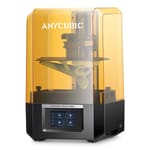
- Detects print failure & resin level
- Prints fast
- Slick Wi-Fi & app experience
- Short vat release film lifespan
- Initial Wi-Fi setup can be fiddly

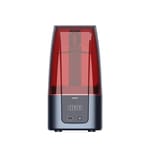
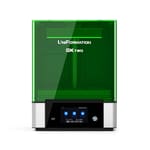
3D printing with resin may seem intimidating, but with a bit of preparation, it can be easier to deal with than printing with filament. Resin 3D printers are mostly plug-and-play, with very little required of you to set up and prepare for printing. This alone makes resin 3D printing a pretty beginner-friendly activity.
This guide for beginners focuses primarily on printers that prioritize convenience, employing smart designs that make using them more accessible and cleaner than the rest. There’s also something to be said for simple models that are inexpensive and easy to learn, so we cover that, too.
Resin 3D printers are relatively simple to operate when compared to FDM printers. They are easier to set up and usually do not need any assembly. The most common models create prints by shining a UV light source through an LCD mask to selectively cure layers of photosensitive resin.
It sounds simple, and while it generally is, there’s a lot of baggage that goes with resin 3D printing: be it print preparation and the fastidiousness required to properly prepare your model before slicing; or the handling of the resin, which is dangerous and a risk to your health just by being around; and not forgetting the post-processing, which is demanding and, again, poses health risks.
None of this is said to scare you off of resin 3D printing, only to provoke the appropriate consideration. The risk will be minimized if you take precautions and respect the materials.
Part of this consideration for beginners is the choice of printer. Some are designed more thoughtfully than others, from the weight and shape of the print plate to the space inside the printer’s footprint to handle the various removable parts.
For a printer to qualify as a printer made for beginners, we have primarily focused on design, convenience, plus plain value. We want 3D printers that minimize the potential for mess from the resin and remove the guesswork, increasing your chance of success. These are the things that make a resin 3D printer suitable for beginners. And, for price sensitivity’s sake, having a rock-solid budget option is worthwhile if spending the absolute minimum with the least amount of pain in the printing is your preference.
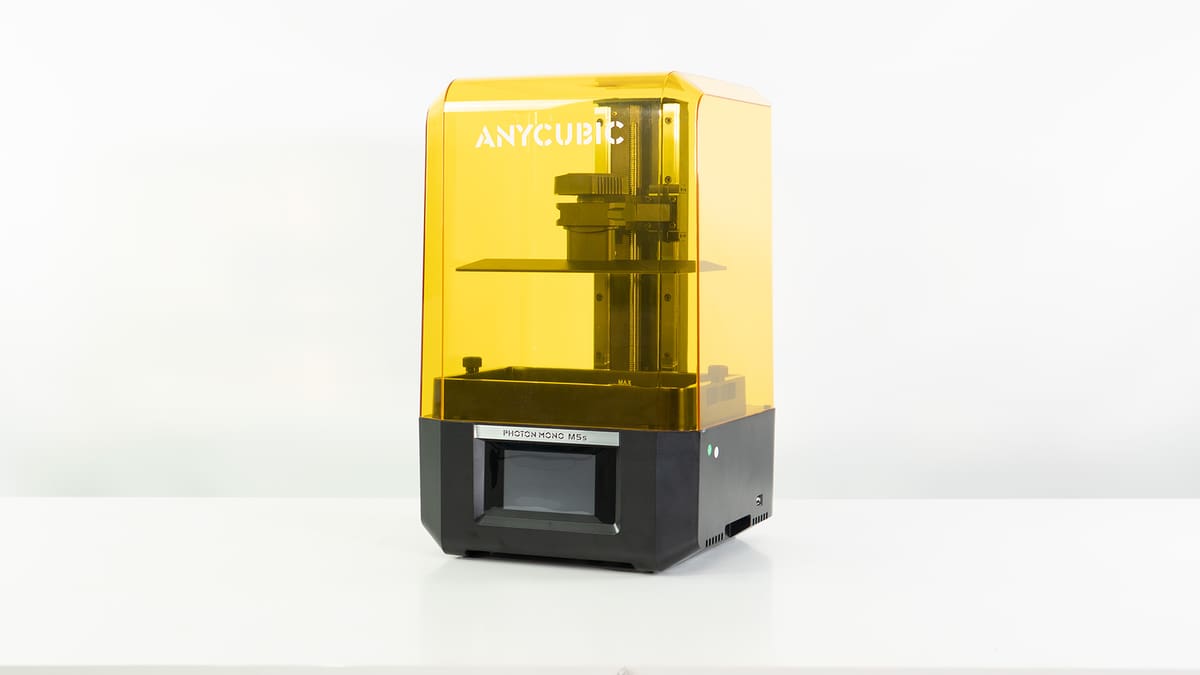
There are a few ways we think a decent 3D printer for a beginner can go: either as a kit that’s as much an education as it is a purchased product; a simple, low-to-no-frill budget device that’s well-known and well-supported; or a rich, plug-and-play experience that gets on with the job better than the alternatives.
Currently, the Anycubic Photon Mono M5s is very much top of the plug-and-play pot, with its compact footprint offering a generous mid-size build volume and layer upon layer of smart, well-implemented features that make using the printer as smooth and hiccup-free as you could hope.
Chief among these things is the print-plate sensor, which brings a handful of benefits including a leveling-free operation, resin fill level detection, and print failure detection. These are three things that are virtually unheard of in budget resin 3D printing, and they all feature in the M5s.
The hit rate is not 100% perfect, granted – we didn’t see 100% success with the print failure detection – but even some failed prints caught (and subsequently paused by the printer) equal time and, potentially, resin saved. It makes for a pretty forgiving printer.
Wi-Fi connectivity is a meaningful feature here, too, weaving across the provided slicer to a companion smartphone app that usefully builds on the experience the printer offers. Sending a print job directly to the printer from the slicer is quick and stable, while the app lets you keep tabs on a print’s status, queue up prints, check the M5s’ maintenance status, and access the user manual and troubleshooting tips.
You don’t need to faff around leveling the print plate when it arrives –just plug it in, load some resin, and start printing. While you do not get one of the varied forms of resin pumps and auto-feeders we’ve seen that are supposed to help keep you printing (but invariably cause more mess than they prevent), the M5s knows whether you have enough resin in the tank to complete your print.
Not to mention it’s fast, too – thanks to a special resin vat release film, the M5s can make short, quick layer change moves, dramatically cutting overall print time.

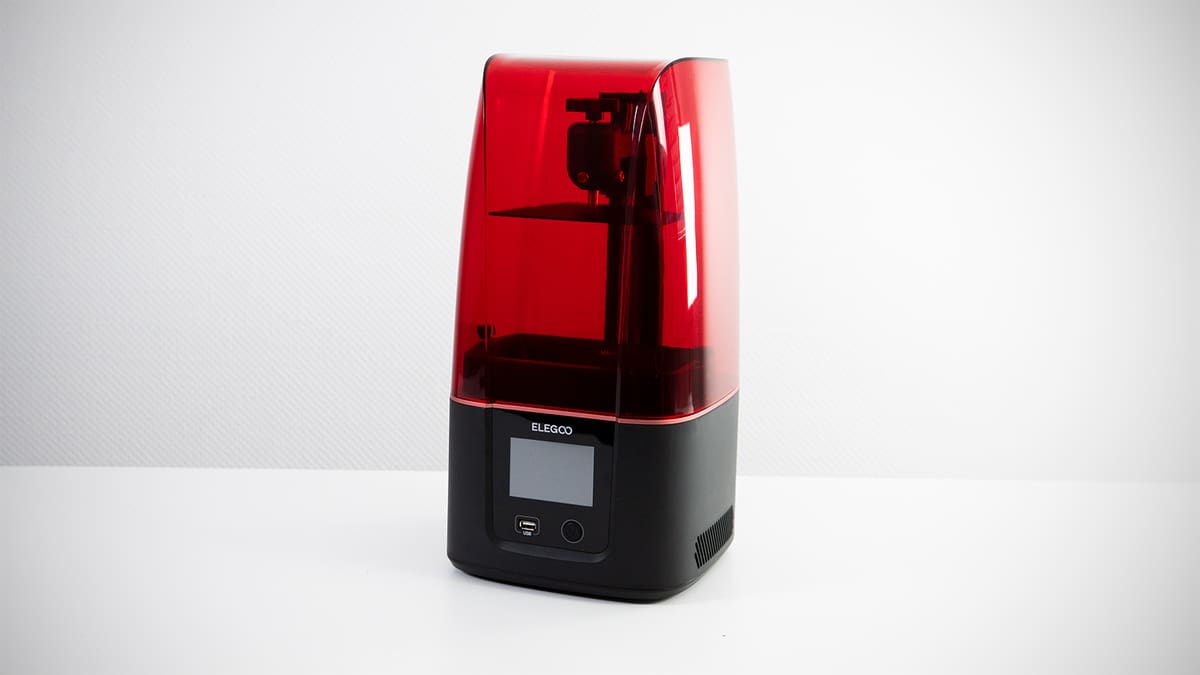
Where the Photon Mono M5s features software safety nets and smarts, the Elegoo Mars 3 is our low-price, low-frills champion. Its ever-decreasing price tag (currently ~$170) makes now as good a time as ever to pick up the Mars 3 if you don’t want to commit much money.
You get a high-resolution masking LCD giving a pixel pitch of 35 microns – meaning stupendously sharp prints are possible. In fact, the Mars 3 offers only an imperceptibly lower resolution than today’s range-toppers – pixel count really isn’t as important as many would have you believe, but the Mars 3 remains competitively sharp.
To add to this, the Mars 3 has a generous 143 x 90 x 175 mm build volume within its surprisingly compact footprint. There’s a pretty unassuming design about it, which emphasizes user convenience with the power switch and USB port located at its front for easy access.
The print plate leveling is simpler than others, thanks to the printer’s ball-joint system. Some users report this as a point of weakness, losing its level quicker than other four-point systems. But the fact remains that it’s the easiest to set, and resetting is still very easy.
If you want to be a little more familiar with the typical resin 3D printer, then something popular that has sold in droves and is subject to much online discussion and exploration is a safe bet. The Mars 3 is the safest bet.

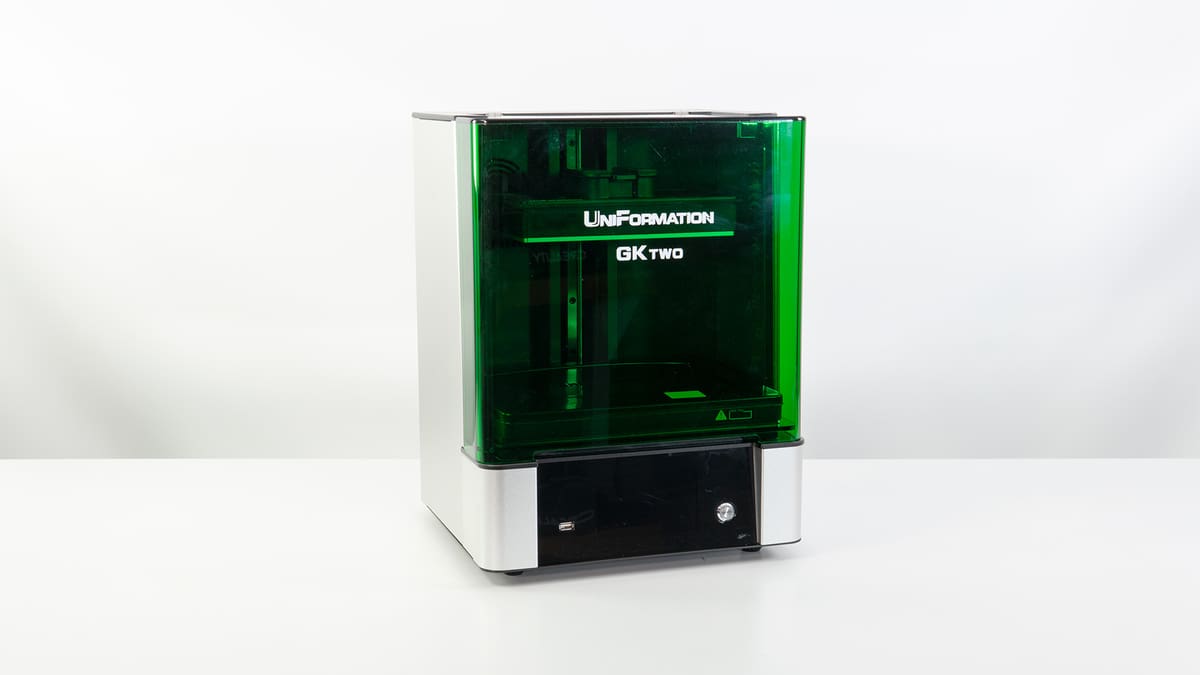
The UniFormation GKtwo is a mid-sized printer with oodles of design touches to make using it tidy. But, it commands a hefty price tag (~$899) over the other picks in this guide. For the 3D printing beginner, it is perhaps the most luxurious system, with useful design elements that make interacting with the printer simpler than ever.
The GKtwo also boasts a killer feature in its temperature-controlled heated resin vat. A crucial component of assured 3D printing success with resin is that the resin temperature is sitting pretty around 30 °C. Prints can work below this, but it’s a heck of a catalyst for reliable performance to have your resin warm. The GKtwo lets you select from one of three temperatures for your resin vat, and the printer will calculate in a heat-up period before your selected print commences. The entire system is automatic and baked into the printer’s software, making it an effortless print success system for you as a beginner.
Additional features include a medium-format build volume of 228 x 128 x 245 mm, a resin vat that snaps into place without screws, and a print plate that secures using a single lever friction lock. Not to mention it has a hinged lid for single-handed opening.
The GKtwo clearly takes inspiration from premium, prosumer resin systems and manages to bring the price down to a consumer-friendly level without compromising too much. It produces fabulously crisp prints, thanks to its mid-size 8K masking LCD, and, if your budget can stretch further, it can pair with complementary post-processing stations designed to fit the printer’s build plate. (You can, for example, take the plate straight out of the printer and lower it into a recess in the company’s ultrasonic cleaner for efficient, hands-off cleaning.)

Since the category of “for beginners” is so broad, really, any resin 3D printer could be considered. That’s what makes this particular branch of printing tricky to nail down.
Our selections above primarily focus on design touches and innovative features that elevate the user experience, making the printer more forgiving of mistakes and more likely to result in print success. Things that elevate them above an ocean of painfully similar machines. Resin 3D printers are not mechanically complicated and temperamental to the point that filament 3D printers can be. Resolutions change, as do the particular arrangement of LEDs and/or lenses beneath them, but the experiences and print results, generally, do not.
Ahead of updating this guide, we went hands-on with the latest budget releases from Anycubic and Phrozen, testing the Photon Mono 2 and Sonic Mini 8K S, respectively. Both machines offer a simple, low-frills printing experience and output cracking 3D prints. Ostensibly, the only thing that really separates them from the Mars 3 is their higher price tags.
Likewise, we’ve tested a handful of medium-format resin 3D printers, including the Elegoo Saturn 3 and Saturn 3 Ultra, plus the Nova3D Whale 3 SE and Creality Halot Mage Pro.
The Saturn 3 really is, at its core, a larger version of the Mars. It’s reliable, prints great, and doesn’t cost much. The Ultra adds boosted print speed and Wi-Fi to the mix but seems largely an upgrade only worthwhile for die-hard fans of the series. The user experience is still relatively basic over the print success and maintenance systems in place elsewhere.
The Whale 3 SE outputs phenomenal-looking prints but is too rough around the edges in its presentation and usability, while the Halot Mage Pro we have has issues that we’ve yet to troubleshoot with Creality. Not a great first impression, but we’ll get to the bottom of it.
We’ll track our changes to this article here so that you can see the ebb and flow of our recommendations over time.
Update – July 31, 2023: A near-clean sweep of new recommendations in this update, with new medium-format resin 3D printers pushing the boundaries of user-friendliness and thoughtful design. Also, we’ve tightened up the intro, bumped some valuable information to a section at the foot of the guide, introduced this very changelog with this first update, and revised the table to include better points of comparison between our picks.
Resin printing, while often easier than FDM, isn’t for everyone. You must consider a few factors before deciding if it’s right for you.
Do you have the ideal space for it? While resin printers might not occupy much space, the material they print emit toxic fumes and require adequate air ventilation or filtration. In a domestic environment, the printer and material should be nowhere near common areas for people and pets. Ensure proper ventilation or install an enclosure that filters and vents the air.
You will also need space for washing and curing area the prints after you pull them from the printer. Resin prints typically need to be washed in isopropyl alcohol (IPA), which is smelly and, crucially, flammable. Prints must then be cured in ultraviolet light or direct sunlight before they’re safer to handle. This process can generate heat, so it must also be treated with caution.
Safely disposing of waste is also crucial when dealing with resin printers. Resin and leftover IPA can not be poured down the drain; the uncured resin is toxic to the environment. Any resin wastage must first be cured entirely before being disposed of in the regular trash.
You will also need a few supplies to go with the resin printer. Large amounts of IPA are usually required, and you will need personal protective equipment (PPE): disposable nitrile or vinyl gloves – nitrile will give you more dexterity than vinyl; safety goggles to protect your eyes from splashes of resin and IPA, not to mention flying shards of support material when post-processing a print; a respirator to protect your lungs from the airborne chemicals given off by the process; and a lab coat to protect your clothes – drips and spills happen, no matter how careful you are.
Resin printers don’t typically ship with a resin sample, so consider ordering a bottle ahead of your 3D printer landing on your doorstep. Besides the resin you print, the resin 3D printers also require the regular replacement of parts, including the resin release film at the bottom of the resin vat. If you print a lot, the LCD mask will eventually need replacement.
If there’s one thing that testing a lot of 3D printers has taught us, it’s that maintaining a broad benchmarking scheme for 3D printers is impractical for getting a sense of what a 3D printer is like to use and live with. Holding a sub-$200 self-assembled printer for hobbyists to the standard of a $6,000 production machine designed to handle engineering-grade materials won’t tell you that the former is a breeze to set up and the latter a tangled web of firmware updates, buggy systems, and unreliable performance.
We want our reviews and buyer’s guides to cut straight to the chase. What is it like to use a printer? What are the defining features like? What didn’t we like? And, more importantly, is it worth the money? We don’t want to get bogged down benchmarking numbers out of context or hung up on issues affected by more variables than we can control.
Our buyer’s guides and reviews take the intended end user of a 3D printer into consideration. We imagine what they’re likely to do with it and focus the testing on challenging this. If we have a large-volume printer, for example, we’ll be printing – surprise, surprise – large prints, making use of the entire bed, and checking the performance at the limits of Z-height.
Other points of consideration for what makes the best 3D printer include ease of use, supporting software, and repair options. If something goes wrong, how easy is it to fix the machine? Does the documentation or customer service provide adequate information?
We strive to answer all these questions and more in our quest to find the best 3D printer for you.
Trust is important to All3DP, so our product testing policy is strict. When sourcing test units from a manufacturer, we do so under a zero guarantees policy. We make no guarantee of coverage in exchange for the printer, and the first time a manufacturer sees what we think is when we publish the content.
If a manufacturer doesn’t reclaim the unit after testing is complete, it is donated to a local cause or goes into deep storage for responsible disposal later. We occasionally buy machines for testing, too. In such cases, machines purchased by All3DP either remain in the office for team usage or are donated or disposed of in the manner described above.
Manufacturers or benefactors donating units for review do not influence the outcome or content of the reviews we produce. To the best of our ability, we will investigate abnormal issues with the manufacturer to glean better context or get insight into their awareness of the problem. But we make no excuses for poor design or bad QA.
One method we monetize our content at no additional cost to the reader is through affiliate product links. If you click on a shopping link featured in our buyer’s guides and reviews, we may receive a small commission from the store if make a purchase. This is at no additional cost to you. For more meaty content policy details, we cover it all in the advertising and commercial activities section of our terms of use.
For most readers, our top recommended 3D printers are your best bet in a given category.
But, facing the fact that there is no one-size-fits-all solution to home 3D printing, we’re here to help. Here are some pointers to orient you in this terminologically dense but wonderful world. (A word on terminology, we have a handy glossary of terms to know at to bottom of this article.)
Many 3D printers pitched for “beginners” or children go to such lengths to baby the user that they quickly become claustrophobic experiences. You will encounter more limitations than possibilities as your experience grows. If you aren’t satisfied with a “beginner” 3D printer’s features, we’d recommend a budget pick instead. You’ll save a little money, and the opportunity to learn by doing is far greater. And if something goes wrong, there are giant tribes online for each printer that have already asked and answered every question under the sun.
While the general quality of budget 3D printers has dramatically improved in recent years, quality control is often lacking. While manufacturers with large user bases are adapting to meet the demands of their newfound fans, including better customer support, there are usually better wells of knowledge to be found in the owners themselves, who contribute to the vast forum knowledge bases for some 3D printers.
We have zero obligation to manufacturers to sugarcoat what we find, and the first time they read it is when you do too. That’s why you can trust our reviews. We don’t pander to anyone, and our experience with the printer is what you read on the page.
If you can’t find any information about a printer you’d like to know more about, let us know at editors@all3dp.com.
A 3D printer for the home is rarely ever a one-and-done investment. Besides the continual purchase of materials, maintenance costs on perishable printer parts can stack up – think nozzles on an FDM printer or FEP film on an MSLA machine. Of course, parts can wear down or break, too, meaning sourcing replacement parts is a sensible consideration if you plan to print long-term. Printers with roots in the RepRap movement and open-source designs will be easiest to source parts for, with off-the-shelf components part and parcel of the design ethos behind them. Enclosed-design printers aimed at beginners may offer the gentlest introduction to printing, but your options to source spare parts will often be limited to the manufacturer. That’s if you can even get to and diagnose the problem.
The thrill of a new hobby will only sustain you so far. Being the desktopification of an otherwise complicated manufacturing process, expect to encounter, sooner or later, problems with a home 3D printer – even the occasional show-stopping issue. Having an end goal in mind for your printing gives you purpose and a reason to learn the solutions to the problems. Printing simply because it looks cool will result in a small mountain of useless doodads and, eventually, disinterest at the hands of cost, frustration, and the buildup of useless plastic trash.
Most home 3D printers are single extrusion fused deposition modeling machines, meaning a single printable material extruded through a single nozzle. Versatile enough for many applications through material compatibility, they’re safe machines to start with. But if you know you need to print objects with challenging geometries or semi-enclosed volumes, a dual extrusion printer would make your printing far easier. Likewise, single objects that need to have different material properties will only be achievable with dual extrusion. A resin printer will be the way to go for high-detail miniatures. Understand the technologies to find a printer that best suits your needs.
While the size of FDM 3D printers can vary greatly, the spillover is small. You’ll get some emissions from the filament melting, cloying the air, making it inadvisable to spend prolonged periods nearby. Generally speaking, the cleanup is minor and relatively easy to contain, depending on the models you print.
Resin 3D printing, however, is dramatically different and has unique demands that should make you think twice before investing. To varying degrees, the resin is smelly and toxic to you and the environment. It requires dedicated cleanup stations and personal protective equipment. You typically need 95 %+ isopropanol to clean prints and dissolve uncured resin from surfaces.
All printers should be operated in well-ventilated spaces, but this applies doubly to resin 3D printers.
While many excellent 3D printers have gotten their big break on Kickstarter, there’s the unavoidable issue that the platform is not a store. You are not buying a printer when you commit money to a campaign on Kickstarter; you are backing a vision. It’s putting money into the pot to help a company or person trying to achieve something.
You get nothing in return if a project is grossly mishandled and the money disappears. Often what you do get is the beta version of the product. You are paying for early access and all the wrinkles across all stages of the product that come with it.
We’re seeing more big-name companies turning to Kickstarter than ever to launch their products – it’s a safe way for them to gauge demand and drum up some interest against the pressure of a ticking countdown. Despite many companies being capable of outright launching products, they go cap-in-hand to enthusiasts with the promise of shiny new tech. Don’t be that user unless you absolutely must be the first to use a product and have money you can afford to lose.
We don’t think it’s worth the risk, but in the interest of cool new tech, report on new campaigns with our news coverage. You will never see a Kickstarter 3D printer in our buyer’s guides unless it has completed its campaign and the printer is widely available at retail, with all the protections that come with buying from a store.
But where’s the UltiMaker? Or Formlabs? What about Raise3D? Desktop Metal?
In the past, we’d list the best professional 3D printers alongside what we consider consumer or hobby-oriented machines (the printers we mainly focus on). An apples and oranges comparison, we know.
With this in mind, we created All3DP Pro, a wing of our content exclusively covering the professional applications of 3D printing and additive manufacturing solutions. Here’s a selection of articles covering the best 3D printers for professional use to get you started.
Choosing the best 3D printer is tricky, not least because the terminology surrounding 3D printing is dense. Here are some need-to-know terms, their explanations, and useful links to help you on your way to 3D printing mastery.
FDM: Fused deposition modeling, otherwise known as FDM, is a 3D printing process that extrudes heated thermoplastic material through a moving nozzle to build an object layer by layer. FDM is a trademarked term, which led to the RepRap open-source movement to coin the alternative phrase “fused filament fabrication” (FFF), but the two are interchangeable.
Filament: Filament is the base material used to 3D print objects via FDM. The filament is typically a solid thermoplastic fed to a print head, heated to its melting point, and extruded through a small nozzle. Filament is commonly available in spools of either 1.75 mm, 2.85 mm, or 3 mm diameter widths – dimensions that dictate the printers that can use them.
G-Code: G-code is the machine language used to instruct computerized tools such as 3D printers. Giving coordinates and instructions for tool heads and other non-movement functions, it is almost exclusively generated by slicing software. It comprises a library of commands to control specific actions like motion, speed, rotation, depth, and other related switches and sensors used in a machine’s operation. You can get to grips with G-code in no time with our guide to G-code commands.
Heated bed: This is a build plate that is heated so that the few layers of extruded plastic are prevented from cooling too quickly and then warping. A heated bed is essential for working with ABS or PETG materials but not so much with PLA.
Hot end: This is the cluster of components that heat and melt the plastic for deposition through the nozzle.
Extruder: Used by some to describe the entire system of parts that pushes and melts filament, extruder can also refer specifically to the motor and accompanying gears that grip the filament, feeding it to the hot end. How the extruder is arranged can affect the printer and its capabilities. There are two common arrangements: Bowden and direct. It’s a messy subject with overlapping terms and technical explanations; our guide to 3D printer extruders gives you all the knowledge to make sense of it.
Bowden: A style of extruder that sees the extruder motor positioned away from the hot end – typically the structural frame of the printer or on one end of the X-axis gantry. So-called for the Bowden cable and its action of allowing a wire to move freely within tightly constraining tubing, the Bowden extruder feeds filament through a PTFE tube directly into the hot end.
Direct Extruder: The other commonly seen extruder type, a direct extruder sees the extruder motor and associated feeding mechanism mounted directly to the hot end, with barely any distance between the feed and the melt zone of the hot end.
Dual Extrusion: Some 3D printers carry two extruders/hot ends, allowing them to incorporate multiple colors or materials into the same print job. While the obvious appeal comes from the possibility for decorative two-tone prints, the real benefit of dual extrusion systems is combining different materials, such as dissolvable support material, to enable the printing of otherwise impossible geometries. It’s a deep topic worth exploring more in our guide to all you need to know about dual extrusion.
PLA: Polylactic Acid, otherwise known as PLA, is a thermoplastic commonly used as a material for printing with FDM 3D printers. It’s easy to work with and is available in many colors and finishes. PLA is somewhat brittle – don’t expect to print strong items with it – but it remains popular for decorative printing thanks to its low cost. You can learn more about PLA in our guide dedicated to the topic.
SLA: Stereolithography is a 3D printing technology that falls under the broader process of vat photopolymerization. The term is often (incorrectly) used to describe all methods of vat polymerization – really, it’s a particular technology that uses a directed laser beam to trace layers into a vat of liquid photopolymer resin. Alongside SLA, other technologies are considered vat polymerization.
Resin: The material used in desktop SLA, DLP, and LCD (MSLA) 3D printers. A blend of chemicals that includes a photoinitiator, resin solidifies under ultraviolet light. Highly toxic and difficult to clean up after a spill, care, attention, and personal protective equipment are musts when working with resin. It is an unpleasant material, and wastage must be disposed of in accordance with local laws. Despite all the warnings, it’s the only way to go for intricate detail.
LCD 3D Printer: A common term for resin 3D printers that use an LCD as a layer mask over UV light. The de facto standard in inexpensive resin 3D printers, the technology is cheap and widely used. The LCD panels are consumable, though, with monochrome LCDs typically having lifespans in the low 1,000s of hours.
MSLA: Mask stereolithography (MSLA) is a term coined by Structo but popularized by Prusa Research. It refers to, basically, the LCD 3D printer as described above.
Micron: One-thousandth of a millimeter. This unit of measurement is commonly used in 3D printing as a value to indicate accuracy, resolution, or surface finish.
Slicer: 3D printing works by building an object layer by layer. A slicer is a program that divides a 3D model into flat layers and generates the machine code for the printer to trace out said layers. The output of a slicer for FDM 3D printers is typically G-code, which gives instructions and coordinates for the printer to execute. Our deep dive explaining what exactly a slicer is gives good foundational knowledge. Many popular slicers are free and open source. Others are proprietary and machine-specific. It’s an essential tool for successful 3D printing.
STL: STL is the most popular file format for 3D printing. Developed by 3D Systems in the ’80s, the STL file type only contains the surface geometry of a 3D object. Despite industry efforts to move onto more efficient and data-rich formats such as 3mf, STL endures and is the most commonly found 3D model file type on popular 3D model file repositories. We explain in more detail in our guide to what exactly STL is.
Open Source: The term given to a product, typically software, but also applicable to hardware that is freely open for others to modify and redistribute according to their needs. In 3D printing, this is often in the spirit that individuals are free to modify, improve, and share changes to the source material for others to test, iterate, and reciprocate. Open source licenses govern the fair and correct usage of open source works, giving terms and conditions that ensure the freedom of access to the creation and any derivatives.
RepRap: A project started in 2005 by Dr. Adrian Bowyer, a mechanical engineering lecturer at the University of Bath. Created to develop a replicating rapid prototype, a low-cost machine capable of printing replacement parts for itself or other new machines. The vast majority of desktop 3D printers stem from the work laid down by the RepRap project. We have a fascinating alternative RepRap Wiki page on the topic if you want to dig deeper.
License: The text of "The Best Resin 3D Printers for Beginners" by All3DP is licensed under a Creative Commons Attribution 4.0 International License.
CERTAIN CONTENT THAT APPEARS ON THIS SITE COMES FROM AMAZON. THIS CONTENT IS PROVIDED ‘AS IS’ AND IS SUBJECT TO CHANGE OR REMOVAL AT ANY TIME.